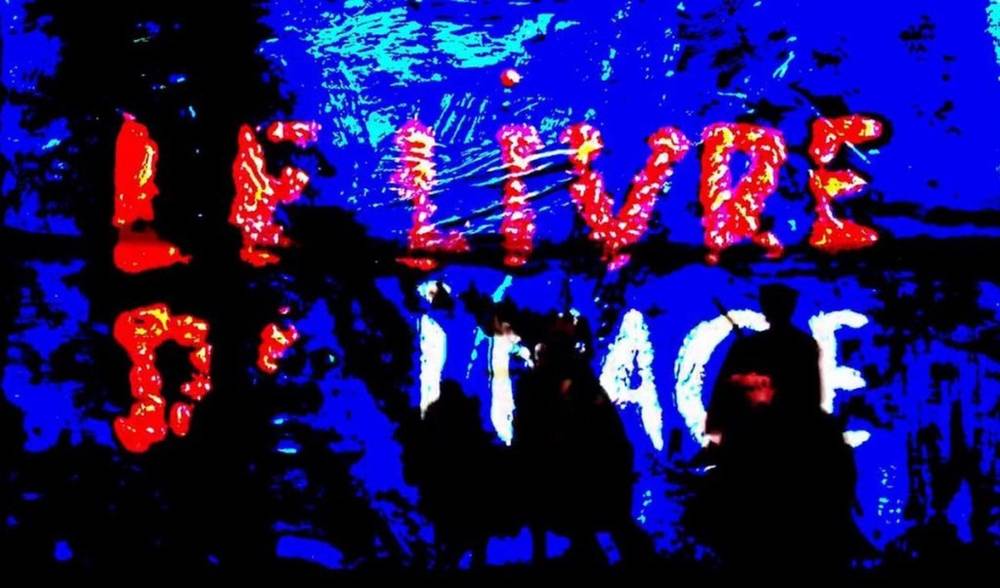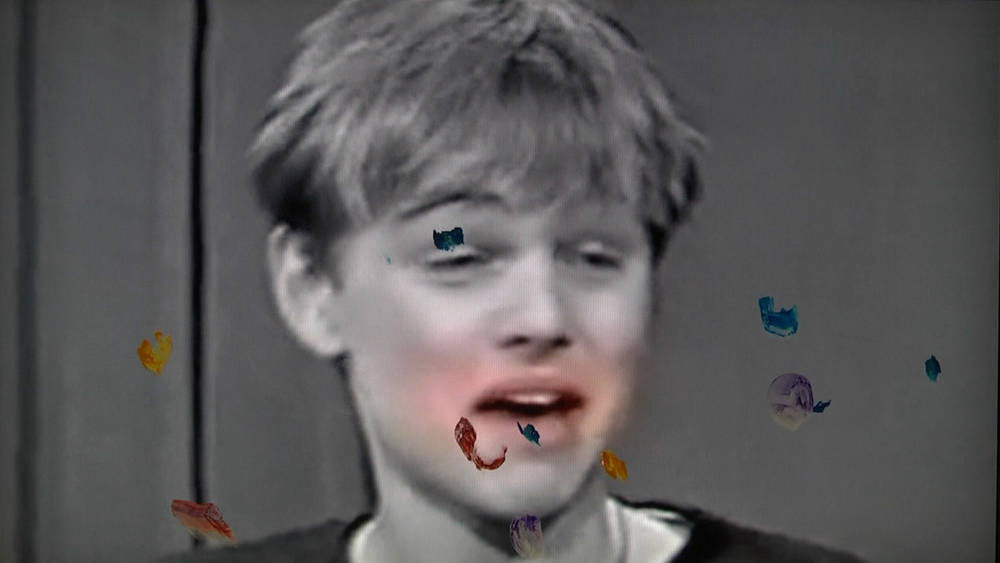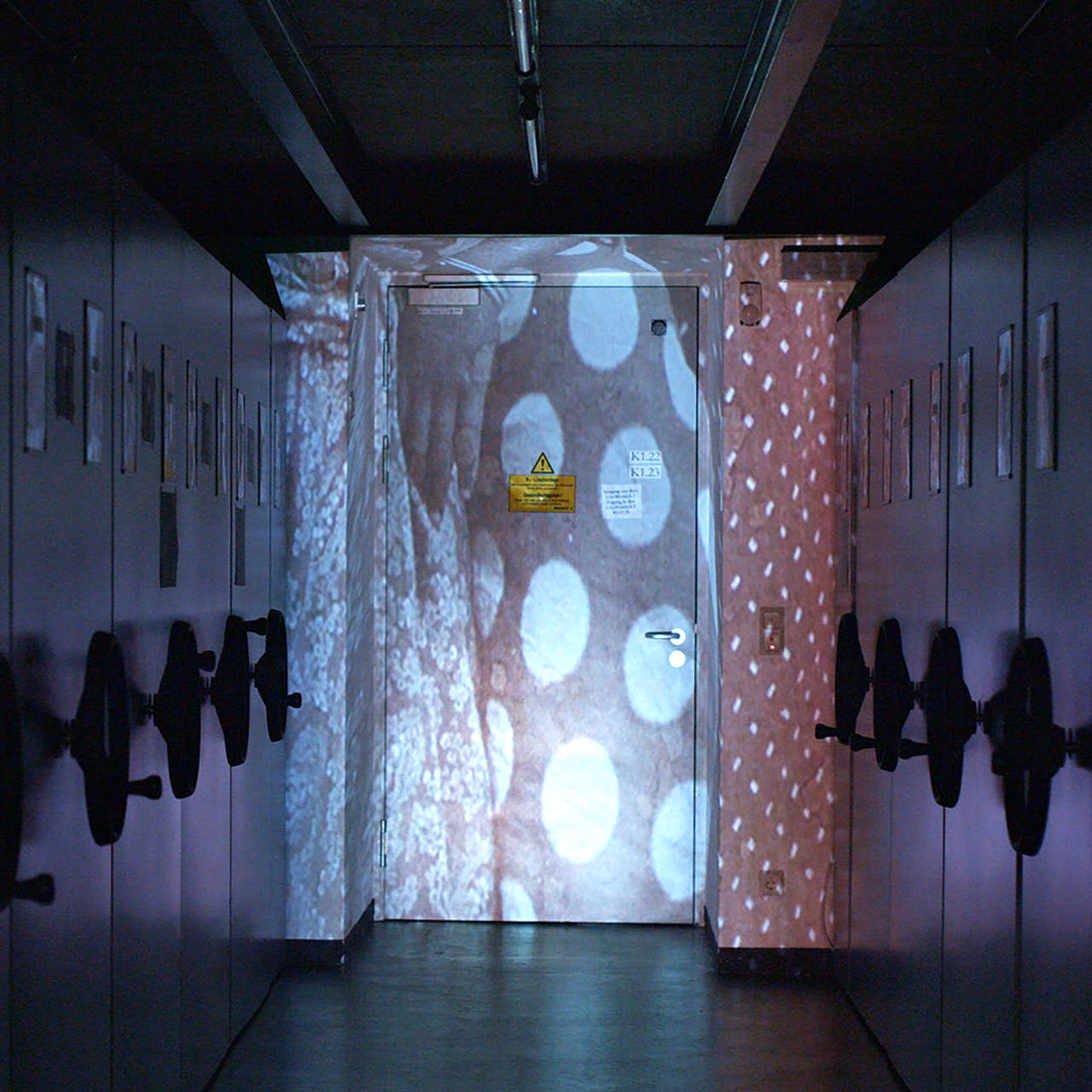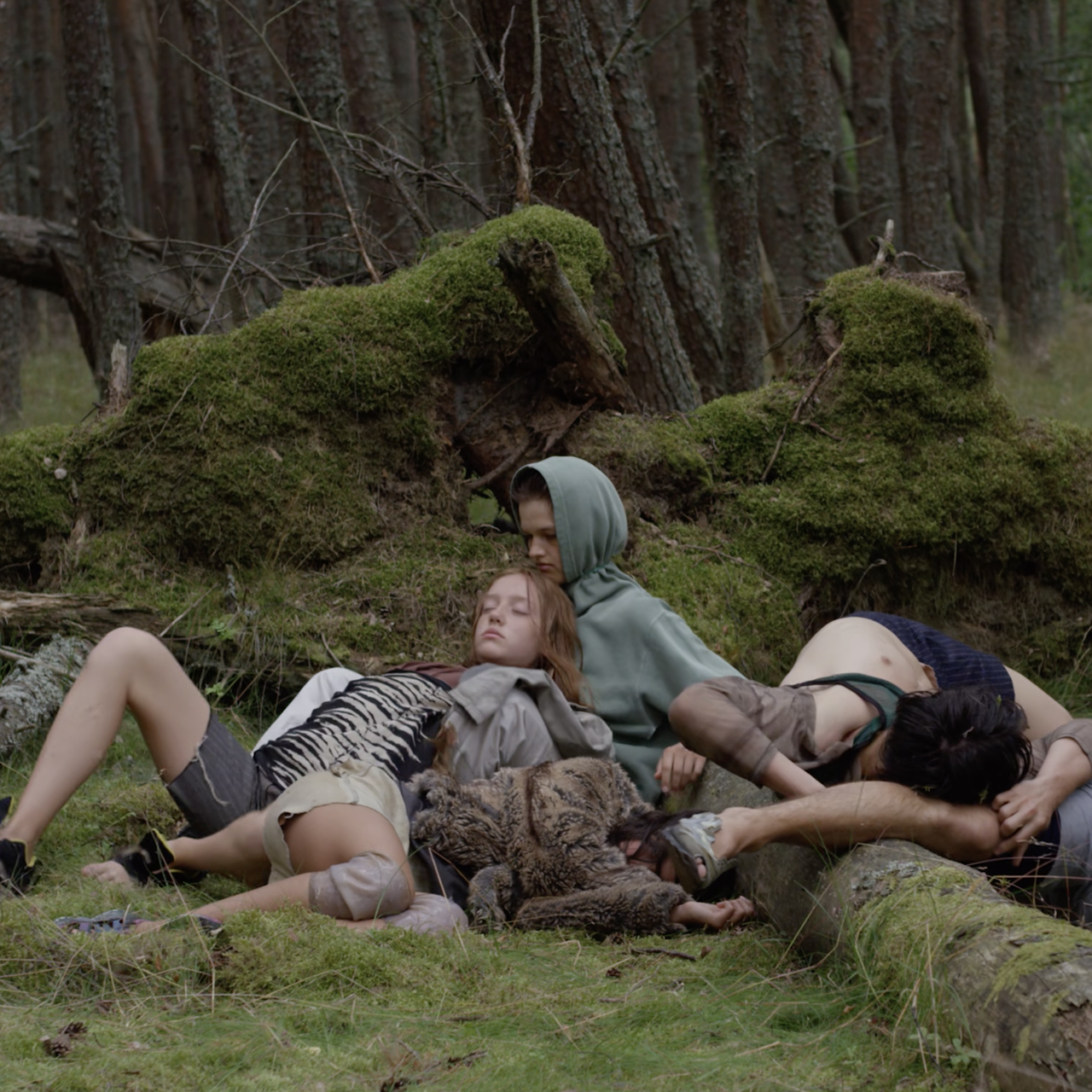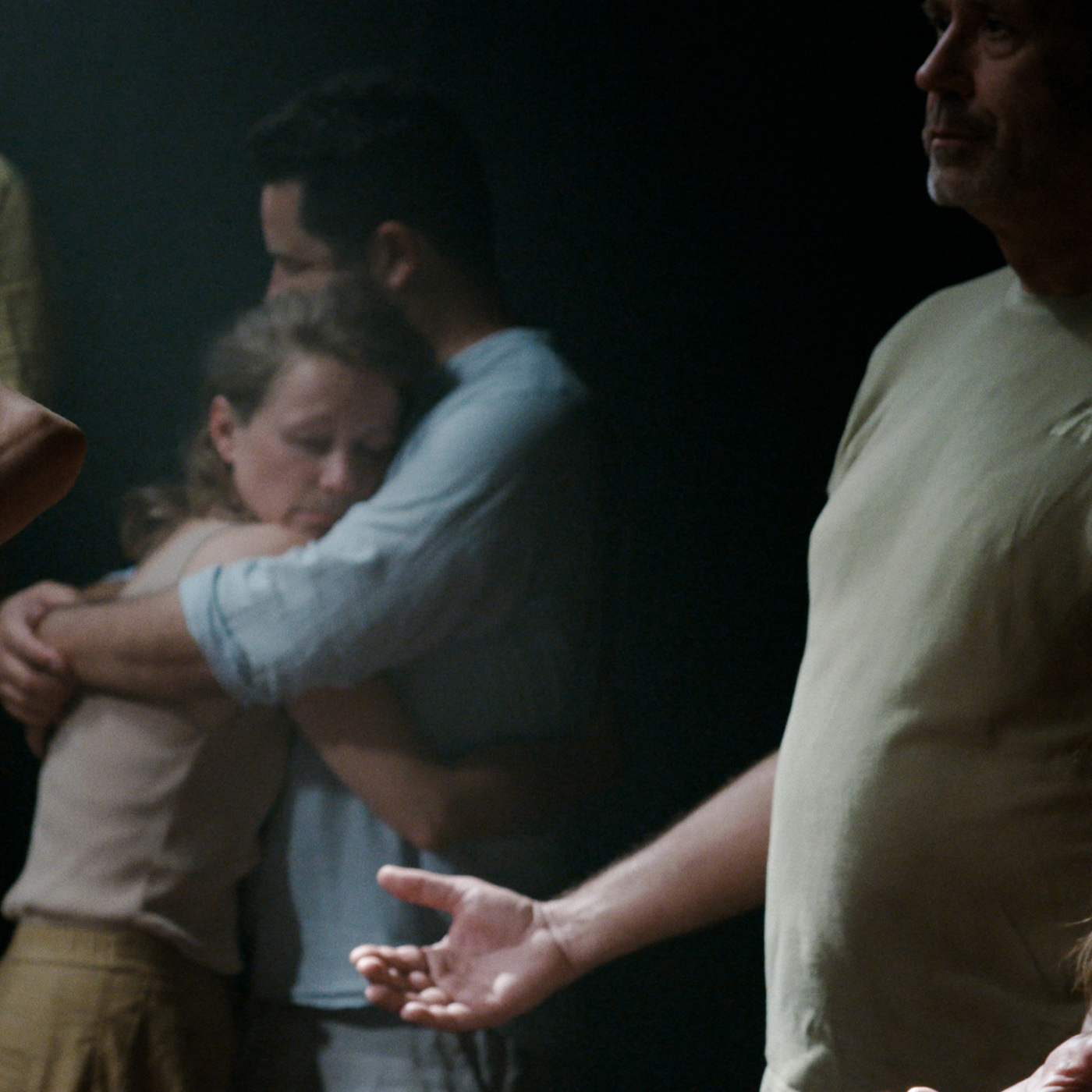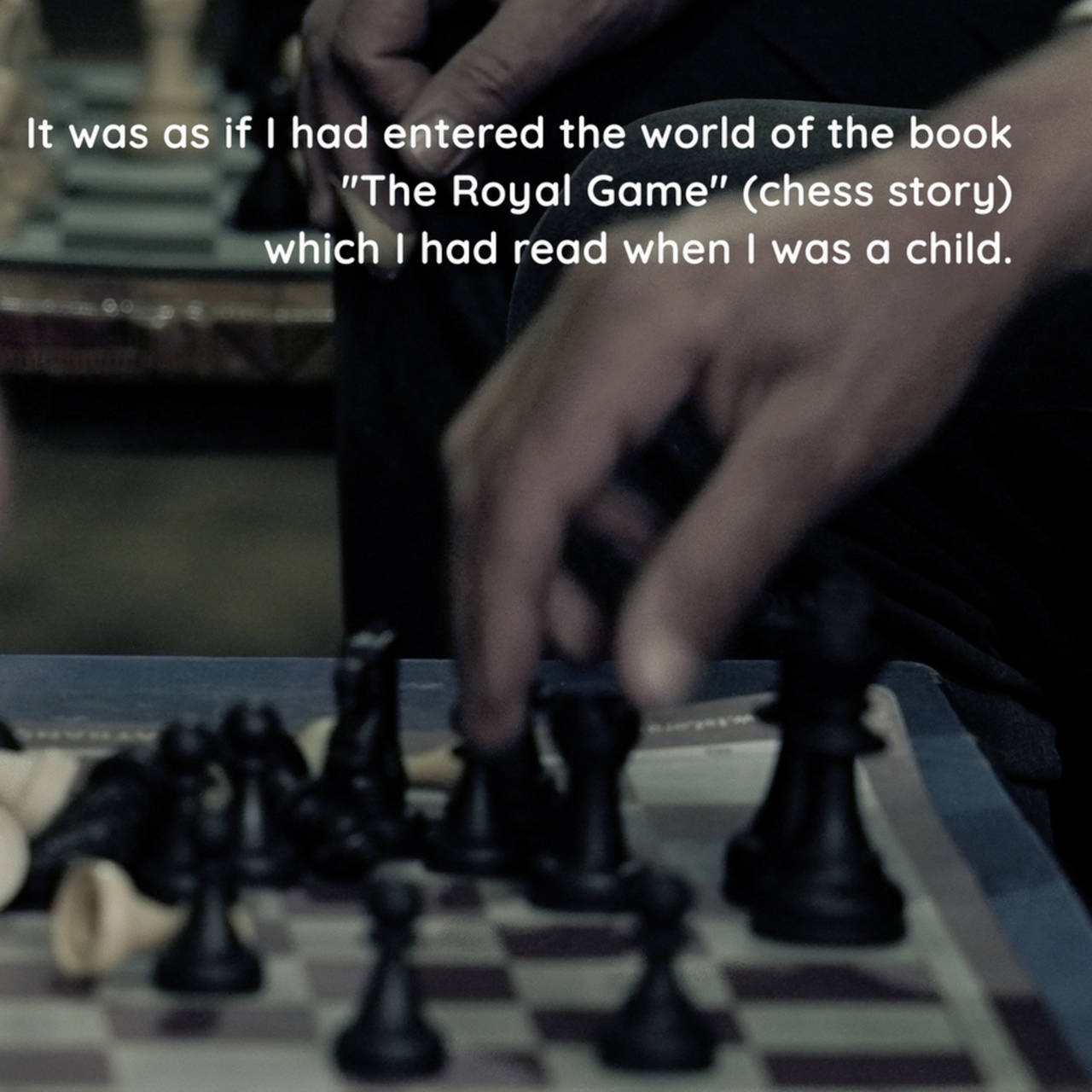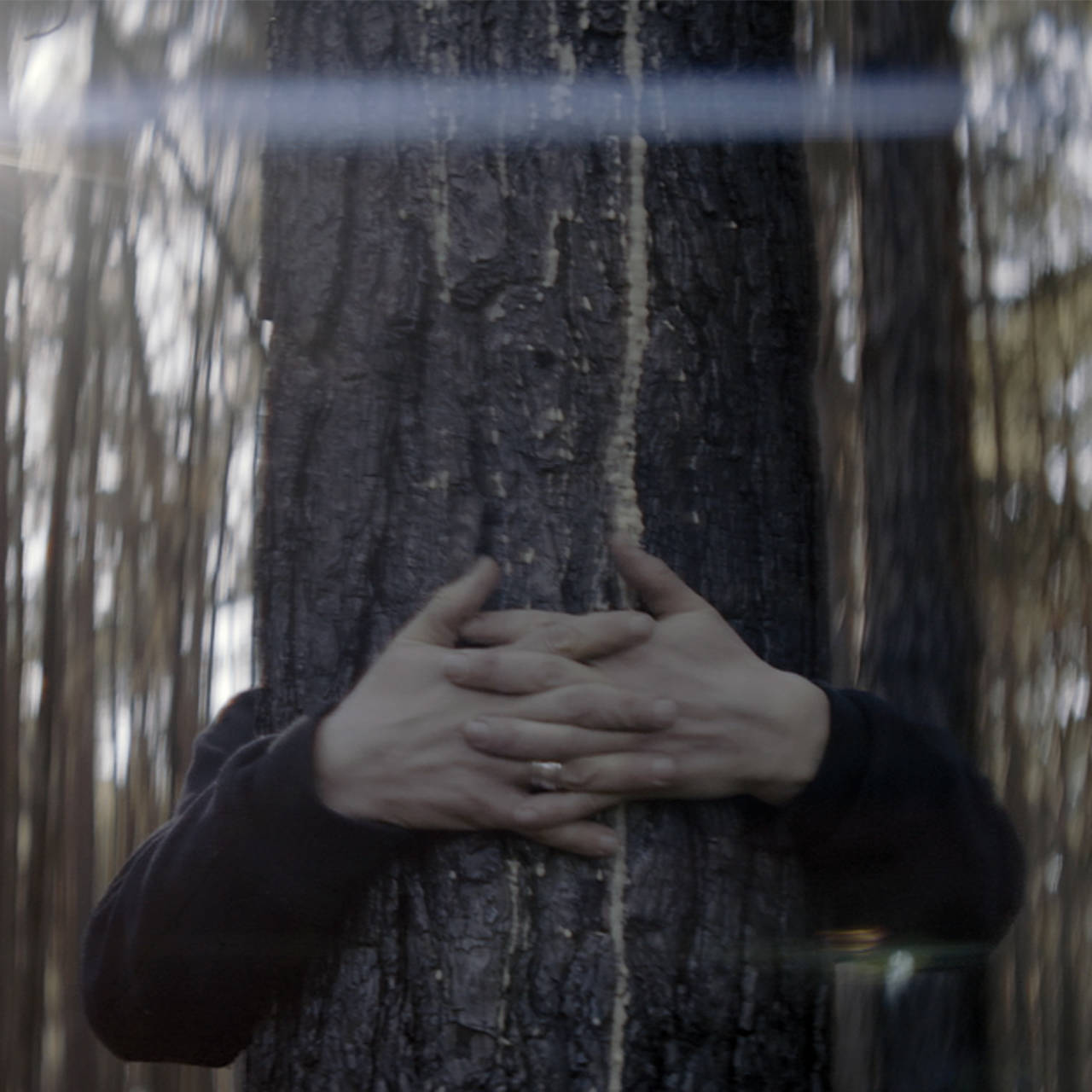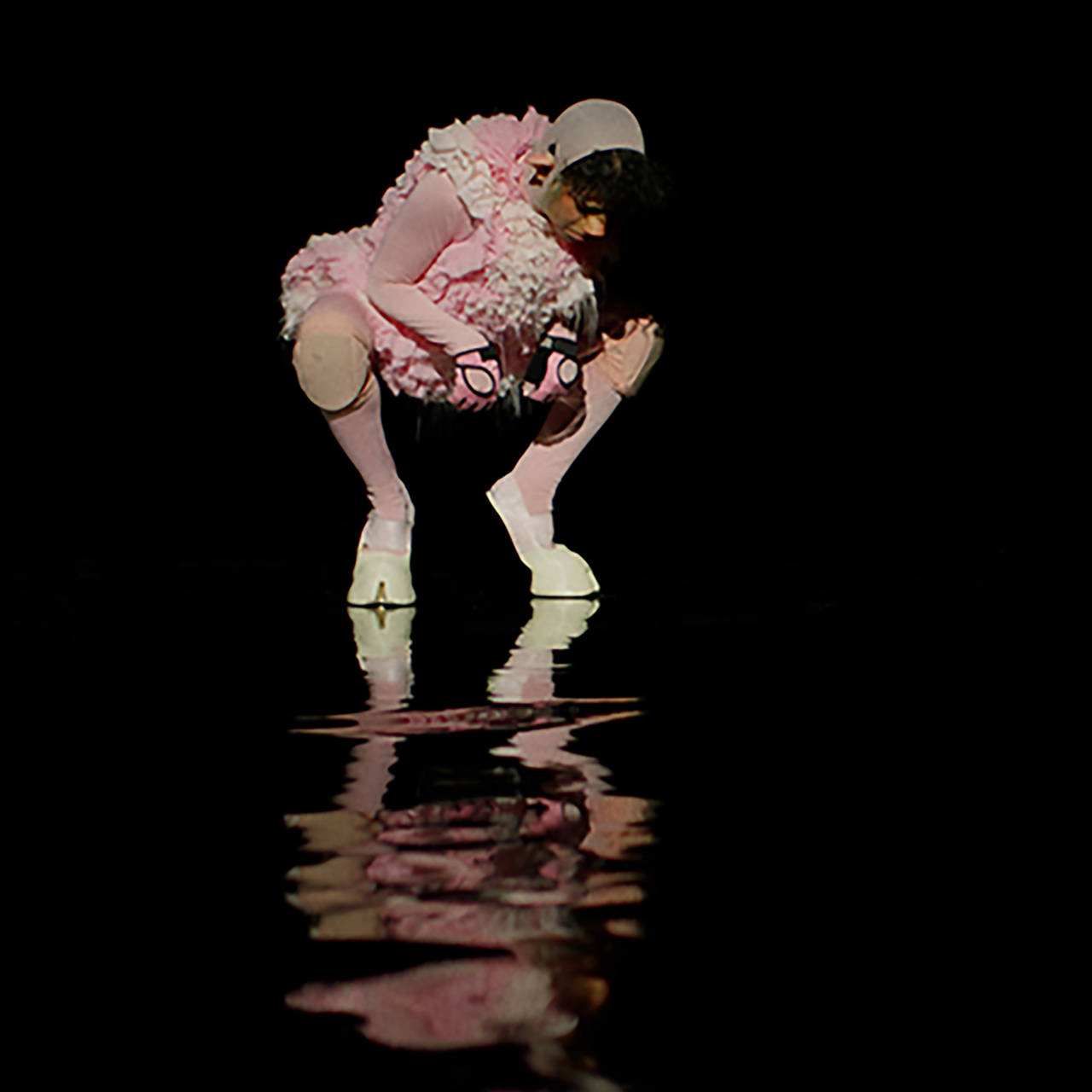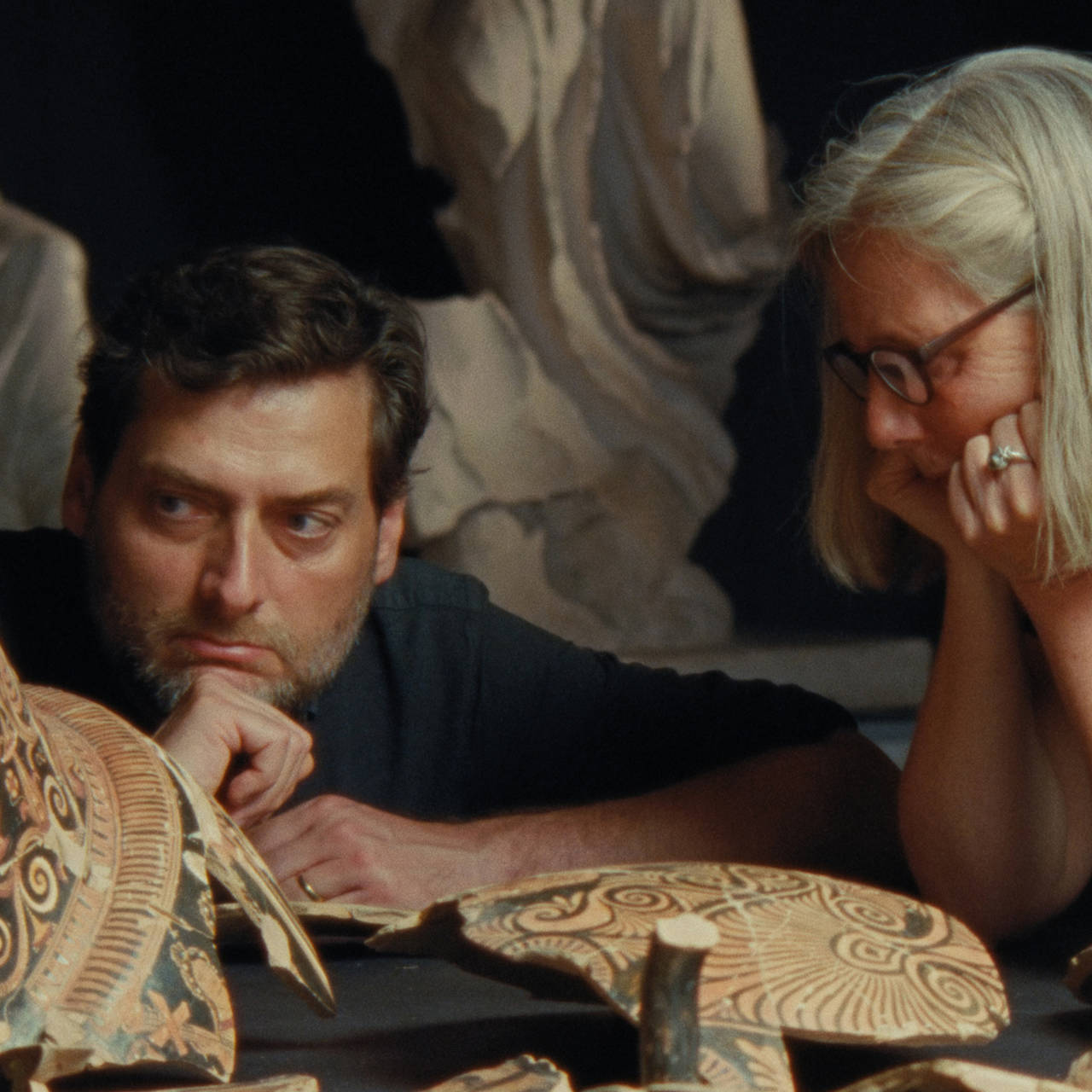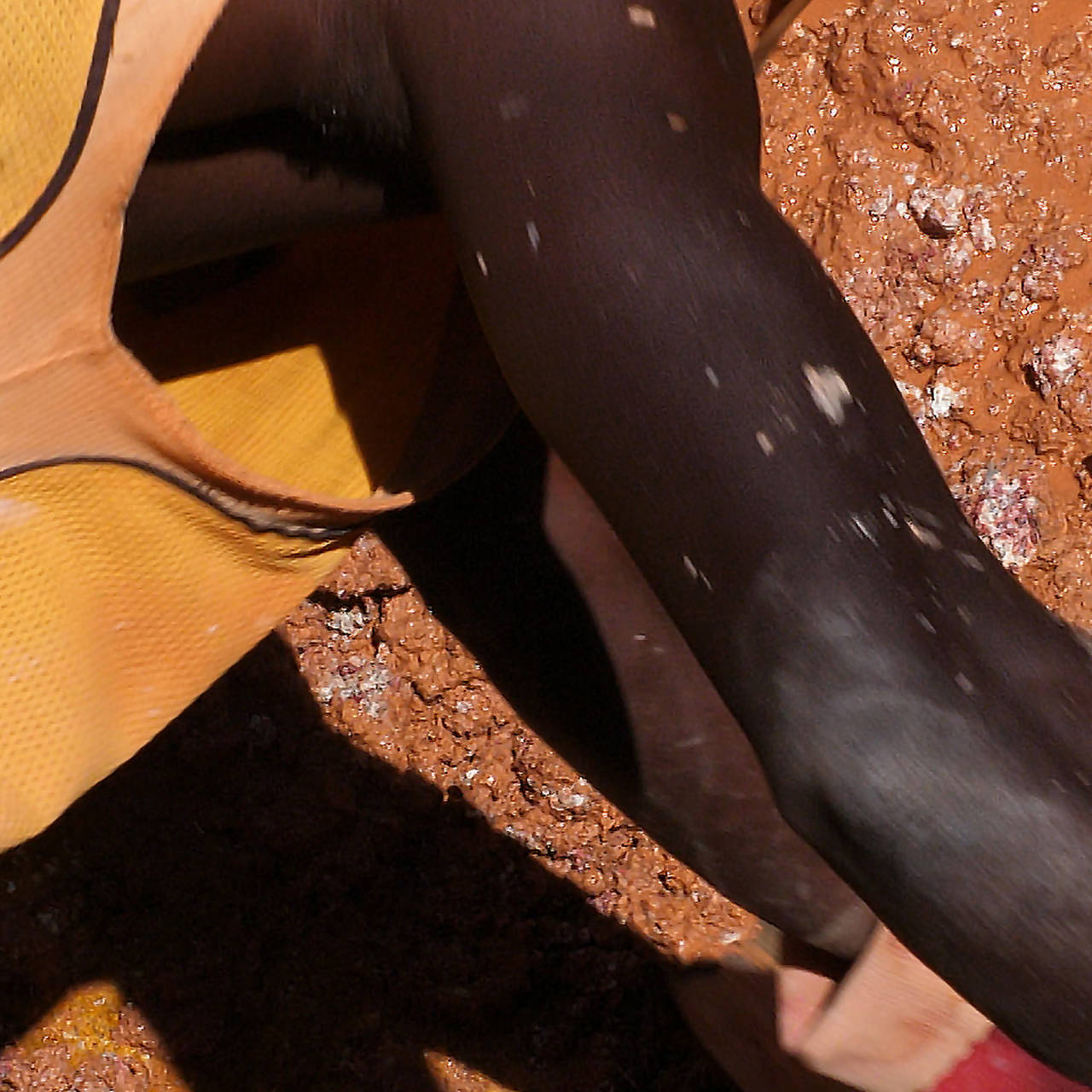This is perhaps the best way to describe the work of video artist Angel Vergara: Art history meets pop culture, the artist himself appears as a painter-ghost and blurs the boundaries of originality.
In his lectures on aesthetics, in the 1820s philosopher G.W.F. Hegel concerned himself closely with the diverse forms that art took – architecture, music, sculpture, poetry, and of course painting. And he concluded that painting had a distinguished role to play: Hegel emphasized that its purported weakness against spatial art, namely its reduction to a two-dimensional canvas, was actually its special feature. For this quality enabled painting to distance itself from merely depicting the outside world and made it a “reflection of the spirit” that the artist enables us to experience intersubjectively.
In the context of his current piece “Les belles idées reçues” (The beautiful received ideas) Angel Vergara, a native of Madrid now based in Belgium, arranged group workshops in a school for the visually impaired as well as at a non-profit association that focuses on working with socially disadvantaged children. On the project website there are countless images and video clips to be seen of the kids’ creative energy as they give their expression free rein. The images that arose here then served as inspiration for Vergara: In a series of “painting performances” the artist then created his own paintings in public, urban spaces.
The individual images flow into each other as if by ghostly magic
Here he appeared as his alter-ego “Straatman”, completely wrapped in a white linen cloth – a ghostly-looking figure that separates him from the public space in a certain way. Angel Vergara has repeatedly used this full-body costume for actions since the late 1980s. Excerpts from the material that was in part later processed in his studio are now going on display in the video presentation “Les belles idées reçues”. The individual images flow into each other as if by ghostly magic. Colors, light and shadow – and in the Hegelian sense they are the painterly characteristics of that individual subjectivity which represents “spiritual interiority” as the processing of objective reality – all unite in a fluid overall image.
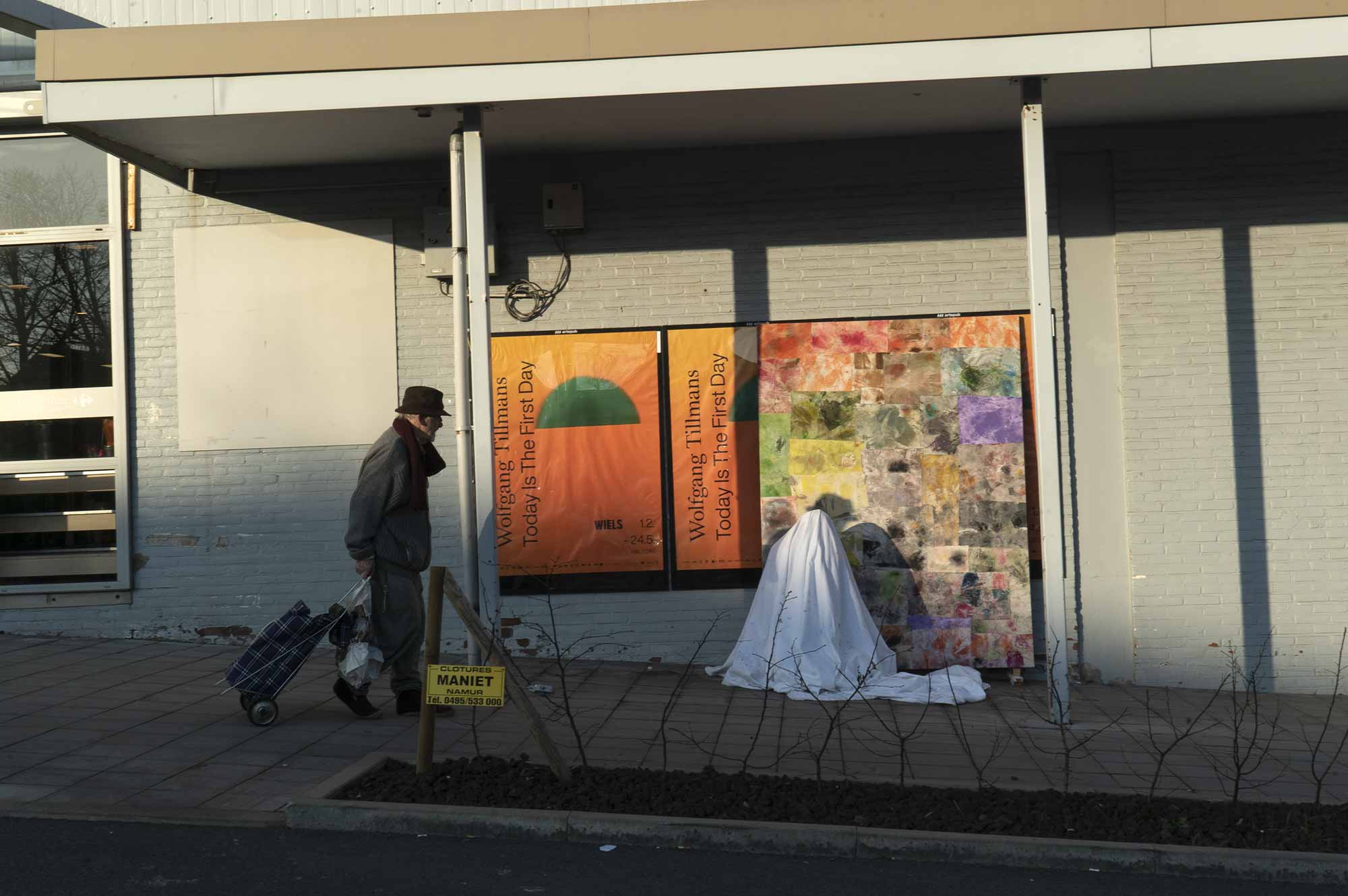
Angel Vergara, J'efface et cela apparait (Les belles idées reçues), 2020 (c) Axel Vervoordt Gallery & the Artist, Image via manifesta13.org
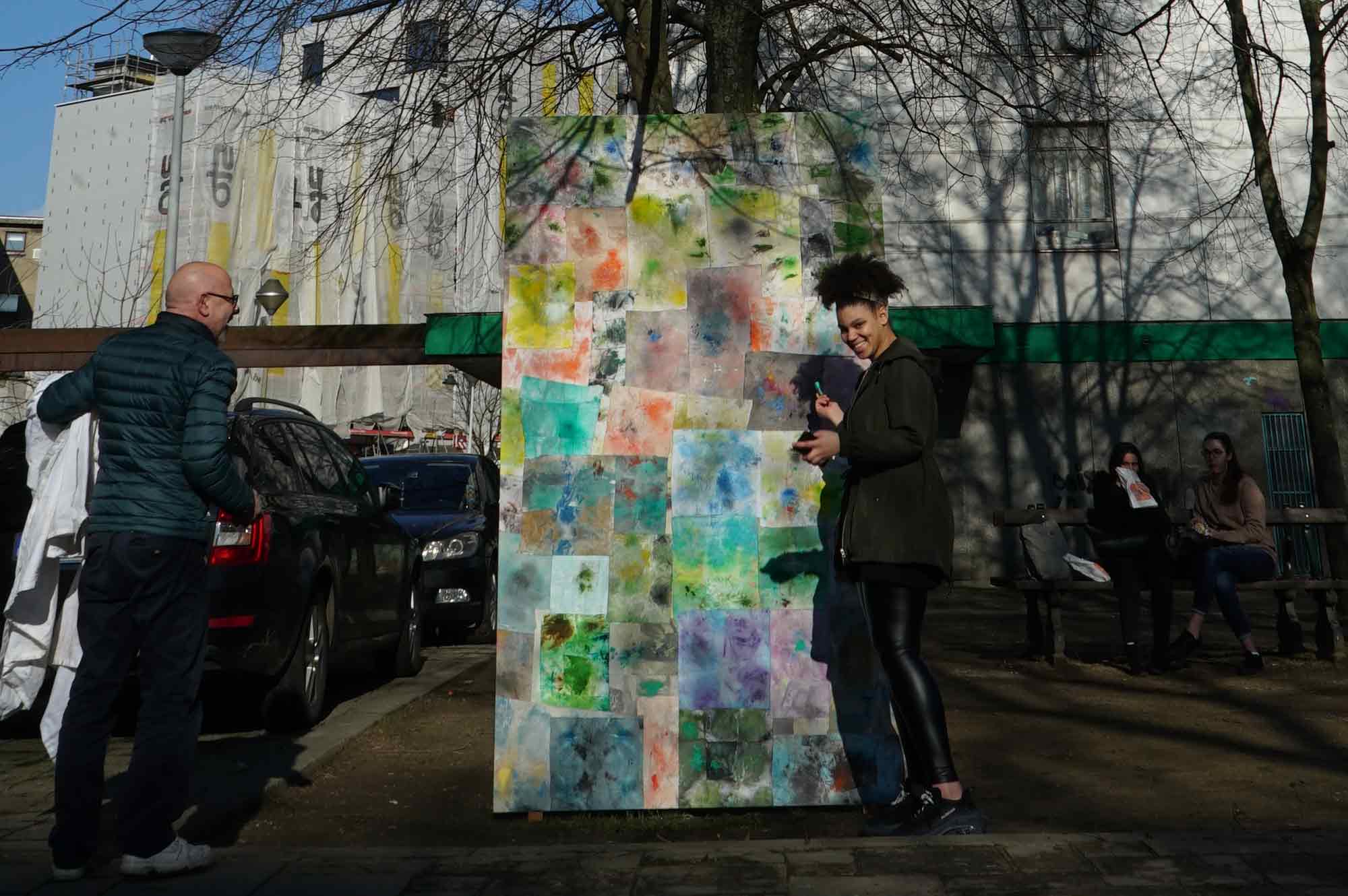
Angel Vergara, J'efface et cela apparait (Les belles idées reçues), 2020 (c) Axel Vervoordt Gallery & the Artist, Image via manifesta13.org

Painting occupies a prominent place in Vergara’s multimedia art. In his video piece “Feuilleton, the seven deadly sins”, for example, which was on show in the Belgian pavilion at the Venice Biennale 2011. Shots repeated in a loop were projected steadily onto seven screens, which in terms of composition are vaguely reminiscent of the leitmotif of the seven deadly sins: found footage material, news snippets, photos, ad clips, newspaper articles and other archive shots. The artistic intervention then follows: Vergara quite literally paints the film screens (using panes of glass placed in front of them) in an act of “live painting”. Carefully, a hand glides across the moving images, lending focus to certain sections of the shots and seems for a brief moment to capture these with the brush, while these have already changed in the meantime. The resulting images on glass were likewise presented in the pavilion.
A hand glides gently over the moving images
Angel Vergara made use of a similar technique in “and yes I said yes I will Yes” (2012). What we see here are largely moving images with major film stars (ranging from Leonardo DiCaprio, Alain Delon and Robert Mitchum to John Cassavetes) as well as self-recorded or archive images of cities and countryside. The title and the text panels that are repeatedly cut into the film rely, by contrast, on James Joyce’s titanic novel “Ulysses”. In this work, too, the brush seems to want to capture certain sequences in an at first seemingly desperate attempt, while the film images have long since stormed away again and can hardly be caught up by the artist. Rather, however, individual expression, the perception of the painter himself is placed in the foreground, similarly perhaps to what James Joyce was one of the very first to do so radically in his novel: to enable others to experience subjective sensibilities.
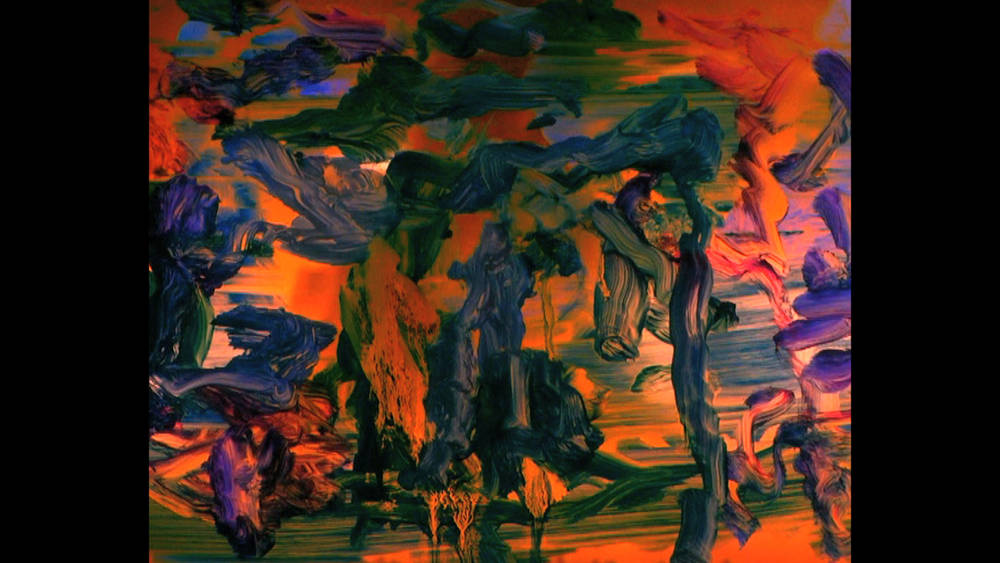
The other film Angel Vergara chose for the Duble Feature is “Le Livre d‘image” by French director legend Jean-Luc Godard, which premiered in Cannes in 2018. Similar to many of the films in Godard’s late phase, the piece can probably best be described as a kind of film-essay, or better still a film-book. “Le Livre d‘image” opens with the filmmaker at the cutting table: “To truly live as a human is to think with one’s hands.” What follows is an associative collage of sections of images and films consisting of Hollywood movies, news items, YouTube horror videos by the IS, and shots Godard produced himself – and he combines them in all manner of possible variations. During all this, he speaks off-screen, in part his voice is deliberately alienated and almost incomprehensible. In five chapters he works away at the history of the moving cinema image in the 20th century and interweaves this with archive footage of wars, terrorist attacks and ecological disasters.
The final section of the film focuses more closely on Western notions of the Arab world and strongly references the book by Egyptian author Albert Cossery “An Ambition in the Desert”. A veritable “hallucinogenic collage” as the newspaper “Die Zeit” called it, which given its ambivalence refuses to give simple political answers and forces viewers to decipher the filmic book of images themselves. At the end Godard quotes playwright Berthold Brecht and his assertion that only the fragment bears the hallmark of authenticity. Possibly it is then also those fragments which Angel Vergara’s painterly hand is forever trying to track down in his works.
To truly live as a human is to think with one’s hands.
